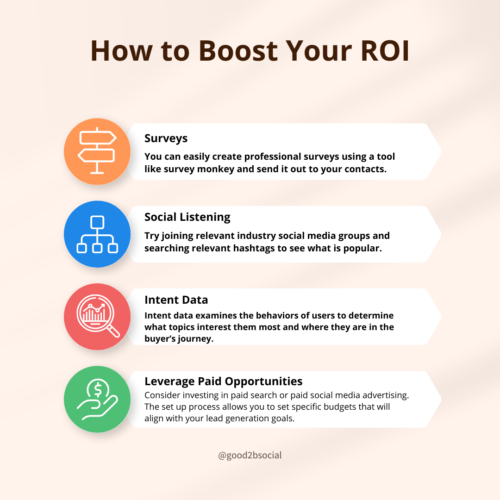
How to Measure and Boost Law Firm Marketing ROI

How to Measure ROI
Set up Tracking URLs
For every single digital marketing campaign that your law firm executes, you should set up a tracking URL. You can easily add various tracking parameters to the URL that is part of your campaign. This is done by adding the parameters to the end of the standard URL. If for example, your digital marketing campaign on social media directs users to your Contact page, the Contact page’s URL would have additional tracking information, making it longer.
These tracking URLs can automatically give the information to your chosen system for tracking, including a CRM. Urchin Tracking Module (UTM) is the most common tracking URL system. It lets you track the campaign source, campaign source medium, campaign source, campaign content, and campaign term. Google even has its own tool that lets you easily add these tracking parameters.
Include Lead Sources in Forms
Most CRMs include the ability to build a form that you can customize with various fields. Some of these forms will also be able to use and store the tracking URLs within the record of contact. Alternatively, you can use something like Gravity Forms, which is simple to configure and achieves the same goal with fewer complications. Essentially, Gravity Forms allows you to add fields to the form that are hidden and include the campaign tracking parameters.
Use Phone Tracking
Do not limit the information you track related to your marketing campaign to just URLs. Your campaign is also likely to include a phone number for your law firm which can and should also be tracked. There are numerous third-party integrations for phone tracking. Zapier, for example, can automatically update or create a contact in the CRM via a Zap. The phone tracking system can pick up your lead source when a potential client calls thanks to a tracking phone number combined with a tracking URL that sends visitors to the page with the number.
The only thing to keep in mind is that phone tracking tends to be more expensive. There is typically a base fee per month plus fees for every number you track. As such, you may want to stick to manually tracking the source of phone leads, and having your team ask callers.
Input the Data Into the CRM
Once you have your Gravity Forms and tracking URLs set up, you need to ensure that the data has a good way of getting to your CRM. Simply put, if someone visits your law firm’s website and submits a form, the CRM will automatically update an existing contact or create a new one. There are various tools that can do this for you automatically, including Zapier.
Use Your CRM to Your Advantage
The best way to measure your campaign’s ROI is to combine all of the above with optimal use of your CRM or other software. A good CRM should let you define various expenses for the lead sources. This should include the option of both one-time expenses and recurring ones. You should also make it a point to register new clients in your CRM or similar software.
How to Boost Your Law Firm’s ROI
Develop Audience Personas
A big part of marketing success is being able to understand your audience and their wants and desires. Start by building an ideal client profile. This will help you determine who exactly your ideal client is, what their wants and desires are, and build out specific attributes about them. That’ll help you determine which paths to take (such as demographics, job titles, personality traits, etc.) Once you have your personas determined, you can take a look at your current efforts and determine if they fall in line with what your audience wants. So, if you determine your ideal client is most active on LinkedIn due to their age group and professional title, and you’re currently most active on Instagram, it’s time to restrategize.
Related: A Law Firm’s Guide to Creating an Ideal Client Profile
Surveys
What’s a better way to learn what your audience wants than to ask them? You can easily create professional surveys using a tool like Survey Monkey and send them out to your contacts. Ask them anything you feel will help you get a clearer path with your marketing strategy. (Ex. If you’re a personal injury lawyer, try asking your audience ‘What’s your most pressing concern when it comes to filing a personal injury lawsuit?’)
Social Listening
Social listening is the act of monitoring social platforms and analyzing social media content that’s relevant to a brand’s industry. Try joining relevant industry social media groups and searching relevant hashtags to see what is popular. This is a great way to see if not just your social media content is aligned with what your audience wants to see, but also what topics, in general, are interesting to them most. Use this list of topics to determine blogs, webinars, email campaigns, etc.
Intent Data
The data you garner from measuring your ROI will tell you a lot, but you can also learn even more from one of the latest data technologies- intent data. Intent data examines the behaviors of users to determine what topics interest them most and where they are in the buyer’s journey. This is a great way to understand what content users want to consume at each stage of the buyer’s journey and create content that more closely aligns with users’ preferences. Not only that, but it cuts back on costs incurred when you waste money on content that won’t convert.
For a more in-depth look at how law firms can leverage intent data, check out this free, on-demand webinar: How Law Firms Can Use Intent Data to Enhance Their Marketing and Business Development Efforts.
Leverage Paid Opportunities
SEO is great, but as we all know, it can be a time-consuming process with very little return at first. This isn’t to say that law firms should throw out their SEO strategy (continue to commit to SEO. It’s a long-term strategy, and over time you can garner the returns you want.), however, in the meantime, you can choose to invest in a more controlled strategy. Consider investing in paid search or paid social media advertising. The setup process allows you to set specific budgets that will align with your lead generation goals.
Takeaway:
Once you have a clearer idea of the ROI for your digital marketing campaign, you should be able to make adjustments that let you use your current campaign to its full advantage. If your law firm is looking for better ways to measure the ROI of your digital marketing efforts, contact us, we can help.
This post has been edited and republished from Mar. 13, 2019.
Let’s get started, and finished
Contact us to get started on your Technology Strength Scorecard and energize your business development process.
Contact Us


